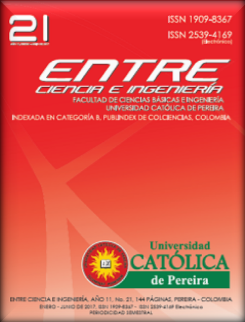Simulation of the customer experience in points of attention of a mass transportation system using Systems Dynamics
DOI:
https://doi.org/10.31908/19098367.3284Keywords:
CRM, customer relationship management, system dynamics, simulation, satisfaction, IMTS, integrated mass transit systemsAbstract
The process of generating identity cards in integrated transport systems is a generally source of complaints by almost all the users. This is the starting point in which customers have an ongoing relationship with the company. The way in which these users are handled must involve an agile and satisfactory process. However, in this system they must go through multiple service posts for treatment, generating delays and dissatisfaction with the little information users generally have. This document presents a conceptual model by the approach of system dynamics, which identifies the need to make decisions related to technology investment and training the servers in various tasks together with a better communication strategy, which allows users to enter the system with a previously completed form, given their availability online. It also identifies the necessary number of advisers and how much they must delay in the process of attention, so that the perceived satisfaction of the clients is maximized.
Downloads
References
J. Swanson, “The Dynamic Urban Model: Transport and Urban Development,” http://www.systemdynamics.org/conferences/2003/proceed/PAPERS/147.pdf, 2003.
C.Raux, “A systems dynamics model for the urban travel system,”HAL archives-ouvertes, 2003.
K. Vakili, “Strategic Asessment of Transportation Demand Management. Policies: Tehran Case Study,” http://www.systemdynamics.org/conferences/2008/proceed/papers/VAKIL208. pdf, 2008.
G. Amarillo, Análisis del transporte en la ciudad de Bogotá desde la perspectiva de la dinámica de sistemas, Bogotá: Universidad de los Andes, 2011.
W J. Aracil and F. Gordillo, Dinamica de sistemas. Alianza Editorial Madrid, 1997.
G. Moscoso, “Modelado de sistemas de transporte masivo empleando dinámica de sistemas: caso Transmilenio S.A.,” Presentado en el 9° Encuentro Colombiano de Dinámica de Sistemas, 2011.
E D Contreras y J D. Silva, “Simulación de un proceso de logística inversa: recolección y acopio de envases y empaques vacíos de plaguicidas”. Entre Ciencia e Ingeniería, Vol. 2, n°18, pp. 16–22.2015.
J. S. Orozco y F. A. Arenas, “Una aproximación al desarrollo de un sistema de transporte masivo a través de la dinámica de sistemas,” Sistemas y Telemática, p. 24, 11.
R. Ackoff, The Art of Problem Solving, New York: John Wiley & Sons, 1978.
K. R. Popper, La lógica de la investigación cientifica, Madrid: Tecnos, 1980.
J. M. a. M. Pradhan, “A systemic approach to addressing the complexity of energy problems,” Syst. Pract. action Res., vol. 16, nº 3, pp. 213-233, 2003.
F. Squazzoni, “The micro-macro link in social simulation,” Sociologica, vol. 1, nº 2, pp. 1-26, 2008.
J. Pérez, “What can’t be ignored in service quality evaluation: Applications contexts, tools and factors,” Revista Facultad de Ingeniería Universidad de Antioquia., nº 72, 2014.






 Revista Entre Ciencia e Ingeniería
Revista Entre Ciencia e Ingeniería .png) entrecei@ucp.edu.co
entrecei@ucp.edu.co.png) ISSN (Impreso) 1909-8367 - ISSN (En Línea) 2539-4169
ISSN (Impreso) 1909-8367 - ISSN (En Línea) 2539-4169 Attribution-NonCommercial 4.0 International (CC By-NC 4.0)
Attribution-NonCommercial 4.0 International (CC By-NC 4.0)
.png) Carrera 21 No. 49-95 Av. de las Américas, Pereira, Risaralda, Colombia
Carrera 21 No. 49-95 Av. de las Américas, Pereira, Risaralda, Colombia